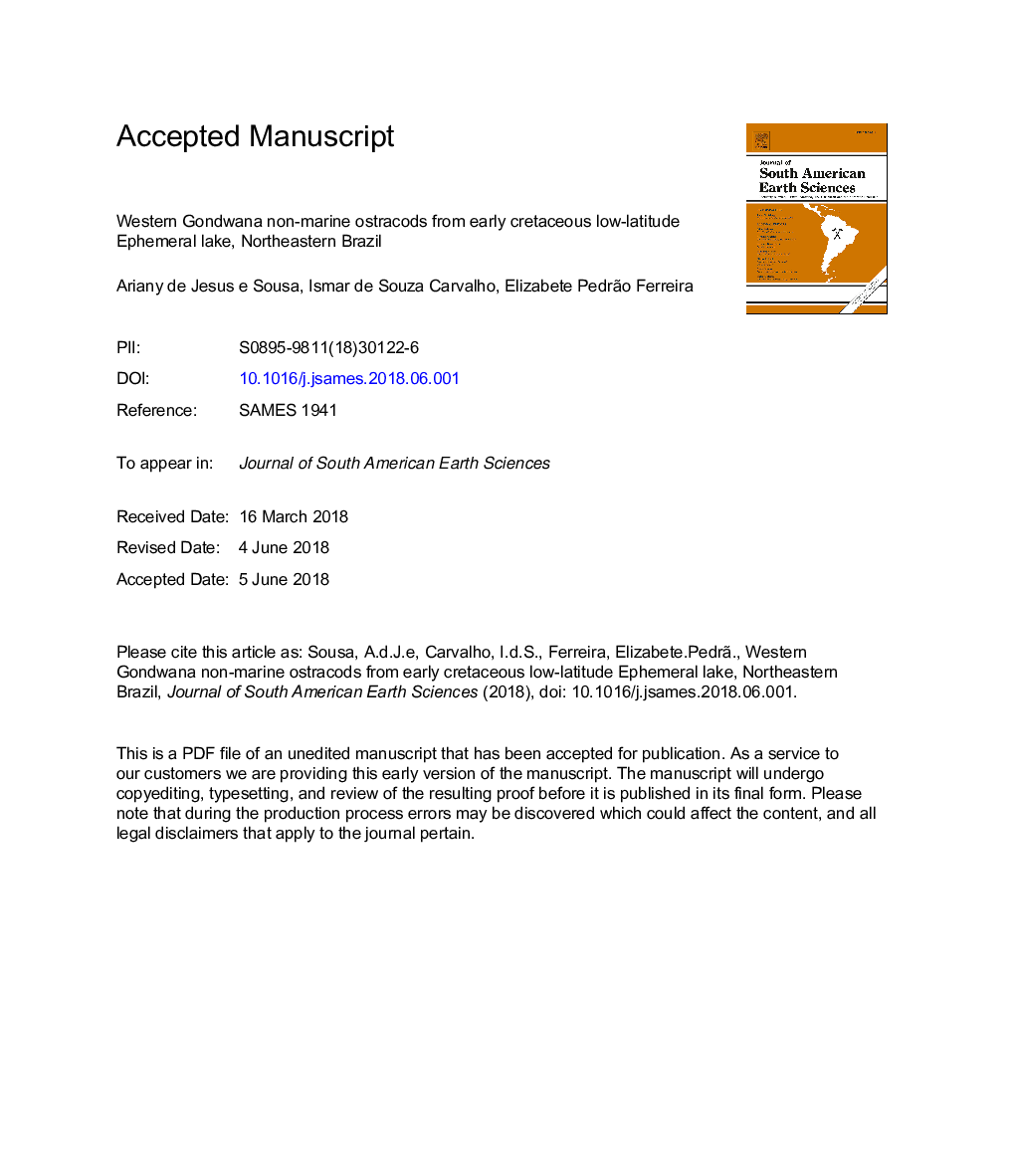| کد مقاله | کد نشریه | سال انتشار | مقاله انگلیسی | نسخه تمام متن |
|---|---|---|---|---|
| 8907568 | 1635124 | 2018 | 44 صفحه PDF | دانلود رایگان |
عنوان انگلیسی مقاله ISI
Western Gondwana non-marine ostracods from Early Cretaceous low-latitude ephemeral lake, Northeastern Brazil
ترجمه فارسی عنوان
غواصی غیر غربی دریای غوندانا از دریاچه های کوتاه مدت کرتاسه در شمال شرقی کرتاسه، شمال شرقی برزیل
دانلود مقاله + سفارش ترجمه
دانلود مقاله ISI انگلیسی
رایگان برای ایرانیان
موضوعات مرتبط
مهندسی و علوم پایه
علوم زمین و سیارات
علوم زمین و سیاره ای (عمومی)
چکیده انگلیسی
In the beginning of Gondwana's break up, small rift lakes were formed in the area that is nowadays located in Northeastern Brazil. These lakes captured the drainage systems and were subjected to hot and arid climatic conditions in a low-latitude area. These conditions are evidenced by the Lower Cretaceous fluvio-lacustrine deposits that filled the Sousa Basin, which integrates a complex of basins along the Rio do Peixe (State of ParaÃba). The Sousa Formation is the most representative unit in the Sousa Basin, being predominantly composed of siltstones and shales deposited in shallow lacustrine environments with fluvial influence. The sedimentation occurred under a semi-arid climate with alternating rainy and dry seasons, indicating the presence of ephemeral lakes. This is also supported by the lithology, the sedimentary structures (mud cracks) and the evaporites (gypsum). The lacustrine environment is favorable to the proliferation of non-marine ostracods, which are microcrustaceans of great importance for the study of current and paleolake deposits. Non-marine ostracod assemblages recovered from the Sousa Formation, sampled from core 2-FC-1-PB, revealed undescribed species. In this work, these ostracods were studied taxonomically, with the new species Cypridea paraibensis sp. nov., Cypridea vianai sp. nov. and Alicenula sousaensis sp. nov., as well as the already described Alicenula leguminella (Forbes, 1855) Martens, Rossetti and Horne 2003, Brasacypris ovum Krömmelbein 1965, Cypridea ambigua Krömmelbein 1962, and Reconcavona swaini Krömmelbein 1962 being identified. Another set of taxa remained in open nomenclature, since the morphological descriptions did not fit existing species. Thus, the descriptions referring to the described groups take into consideration criteria such as similarity and variability of morphological factors (Alicenula ex gr. leguminella and Alicenula sp. 1), degree of preservation, and quantity of recovered carapaces.
ناشر
Database: Elsevier - ScienceDirect (ساینس دایرکت)
Journal: Journal of South American Earth Sciences - Volume 86, October 2018, Pages 23-37
Journal: Journal of South American Earth Sciences - Volume 86, October 2018, Pages 23-37
نویسندگان
Ariany de Jesus e Sousa, Ismar de Souza Carvalho, Elizabete Pedrão Ferreira,
